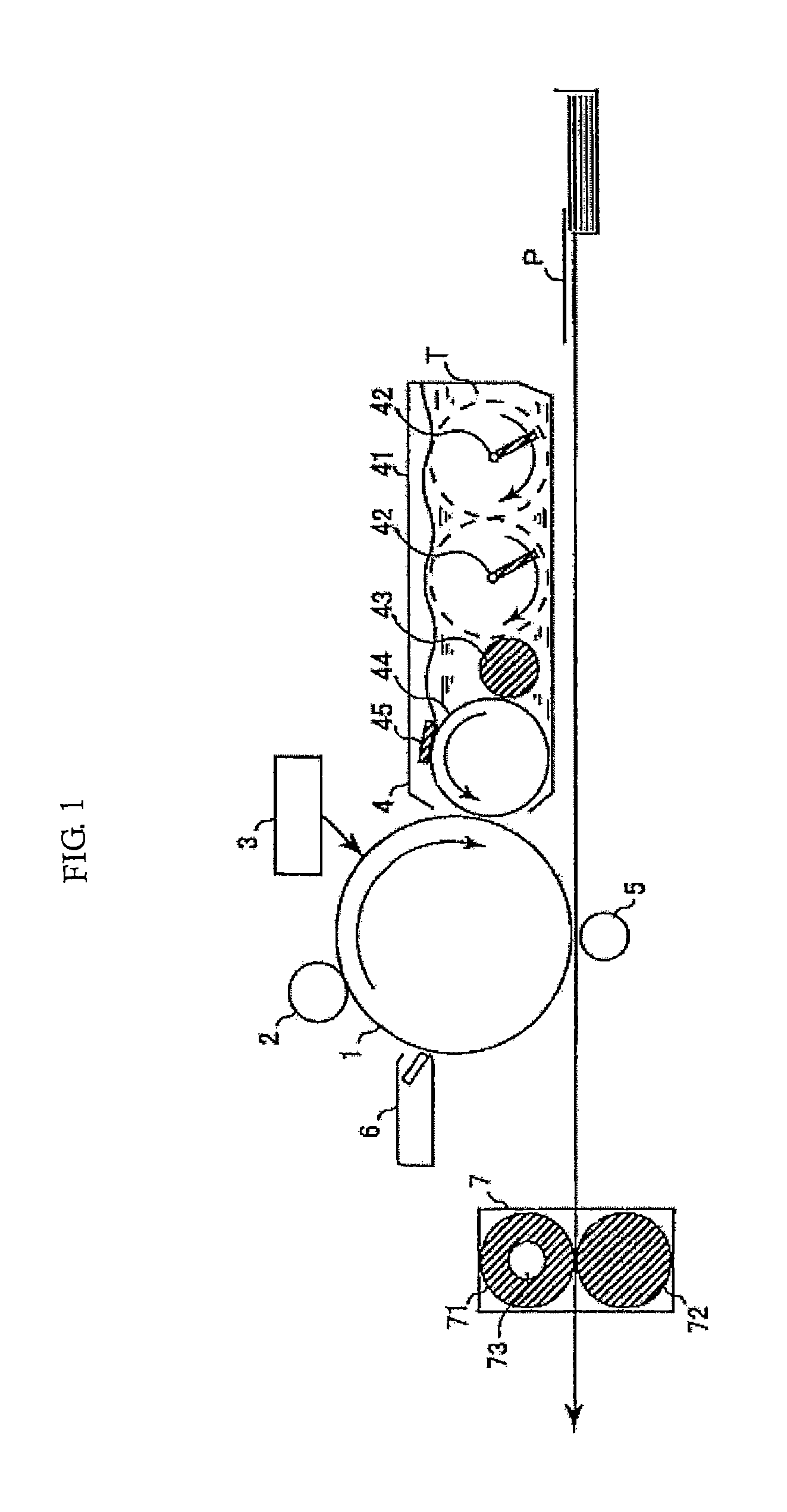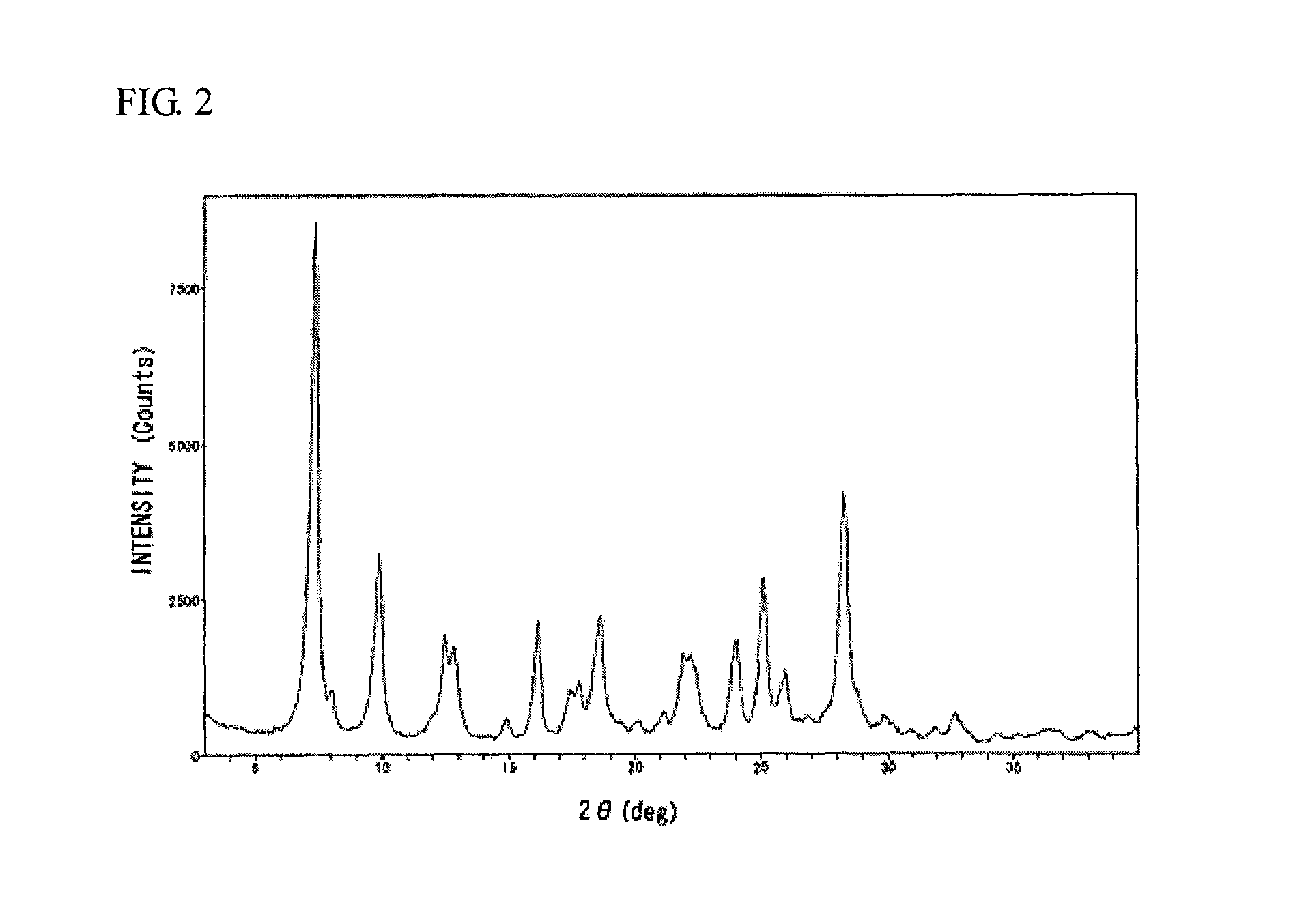Electrophotographic photoreceptor, electrophotographic photoreceptor cartridge and image forming apparatus
a photoreceptor and photoreceptor cartridge technology, applied in the direction of electrographic process apparatus, instruments, corona discharge, etc., can solve the problems of light attenuation behavior and repetition stability deterioration, high risk of allowing a slightly produced potential variation to emerge as an image defect, and high cost. , to achieve the effect of excellent durability and stable performan
- Summary
- Abstract
- Description
- Claims
- Application Information
AI Technical Summary
Benefits of technology
Problems solved by technology
Method used
Image
Examples
example 1
Production of Coating Solution for Undercoat layer Formation
[0161]Rutile titanium oxide having an average primary particle diameter of 40 nm (“TTO55N”, produced by Ishihara Sangyo Kaisha, Ltd.) and methyldimethoxysilane (“TSL8117”, produced by Toshiba Silicones) in an amount of 3 mass % based on the titanium oxide were mixed in a Henschel mixer, and the obtained surface-treated titanium oxide was dispersed in a mixed solvent of methanol / 1-propanol at a mass ratio of 7 / 3 by a ball mill to make a dispersion slurry of surface-treated titanium oxide. This dispersion slurry, a mixed solvent of methanol / 1-propanol / toluene, and a pellet of a copolymerized polyamide composed of ε-caprolactam [the compound represented by the following formula (A)] / bis(4-amino-3-methylcyclohexyl)methane [the compound represented by the following formula (B)] / hexamethylenediamine [the compound represented by the following formula (C)] / decamethylenedicarboxylic acid [the compound represented by the following fo...
examples 2 to 4
[0171]Photoreceptors were produced and evaluated in the same manner as in Example-1 except for changing the mixture of (5)-1 and (5)-2 to (5)-5, (5)-7 and (5)-10, respectively, in Example 1. The results are shown in Table-1.
example 5
[0172]A photoreceptor was produced and evaluated in the same manner as in Example-1 except for changing the charge transport substance (1)-2 to (1)-4 in Example 1. The results are shown in Table 1.
PUM
 Login to View More
Login to View More Abstract
Description
Claims
Application Information
 Login to View More
Login to View More - R&D
- Intellectual Property
- Life Sciences
- Materials
- Tech Scout
- Unparalleled Data Quality
- Higher Quality Content
- 60% Fewer Hallucinations
Browse by: Latest US Patents, China's latest patents, Technical Efficacy Thesaurus, Application Domain, Technology Topic, Popular Technical Reports.
© 2025 PatSnap. All rights reserved.Legal|Privacy policy|Modern Slavery Act Transparency Statement|Sitemap|About US| Contact US: help@patsnap.com



